Bradford Museums and Galleries holds some very interesting Natural Science collections, and our Curator for those Collections, Dr G. McGowan has kindly agreed to write us a blog post giving us an insight into just one aspect of those collections.
He writes:
Recent enquiries to research our insect collections, specifically the butterfly & moth collections of a local man Jerry Briggs (1904-1991) inspired me to write a blog about these very important collections that make up a part of the service’s entomology holdings.
The entomology (pinned insects) collections comprise numerous smaller collections of mostly local natural history enthusiasts who over their lifetimes collected insects, often only specific orders or specific families, and later donated them to the museum. Some of these specimens date back to the mid-18th century, although most are early to mid-20th century.
Two of the most complete collections were amassed by two local men, Cecil Haxby (1913-1978) and Jerry Briggs. They were contemporaries and friends who often exchanged specimens and collected together as part of their recording duties for the Bradford Naturalists.

Cecil Ralph Haxby F.R.E.S. (Fellow of the Royal Entomological Society) was a local Bradford naturalist, born 6 July 1913, who developed his keen interest in the natural sciences from his father Fred Haxby (1875-1942), himself a renowned collector of mosses and flowering plants and prominent member of the Yorkshire Naturalists Union (YNU). Indeed C.R. Haxby started his life-long interest in natural history by collecting mosses and naming them under the guidance of his father in 1926-27. Although he maintained a keen interest in botany throughout his life it was for moths and butterflies that he developed a passion.
Cecil Haxby collected butterflies and moths (Lepidoptera) all his life and his expertise accorded him the position of recorder of Lepidoptera for the Bradford Naturalists’ Society for over 25 years, for which he also served as a President. At the time of his death, 17 December 1978, he was also chairman of the Yorkshire Naturalists Union Lepidoptera Committee.

Mr Haxby collected his specimens using both a mercury vapour trap and as eggs in the wild, which he raised in captivity until selecting some for his collections and releasing many others back into their natural habitat. He often travelled to the New Forest where he actively collected. His expertise of the Lepidoptera of this region stemmed from his time stationed at Holmsley during the Second World War while he served with the R.A.F. He also served in South Africa and the Middle East and was a keen observer of nature while stationed in these exotic overseas lands.
C.R. Haxby’s collection comprises 70 drawers (Object Number: NS.3.79), plus several storage cases. His collection of moths and butterflies totals between 7000 and 10,000 specimens. He mounted each individual specimen with a keen artistic eye and meticulous attention to detail that makes his collections one of the most stunning in all of Britain. Haxby selected his butterflies and moths to match in size, shape and colour with the other examples of the species, thus displaying specimens of uniform quality. This style of selecting specimens unfortunately does not then show the variation in size, shape and colour that would naturally be displayed within a population or indeed the species. All of Haxby’s specimens are labelled with data about locality and date of capture (and rearing information if they were bred), which makes them extremely valuable to further scientific studies. Even the ‘Hill’ cabinets he used were the best entomological cabinets made in Britain. In addition to his entomology collections Bradford Museums Service also acquired Haxby’s bryophyte collection (NS.1.79) and his herbarium collection of vascular cryptogams (plants that reproduce by spores e.g. ferns) and phanerogams (plants that produce seeds e.g. conifers and flowering plants) (NS.2.79).


Although the majority of his collection is from the Yorkshire region many species, rare to the north of England, were collected from Southern England when he travelled or went on holiday. This adds immense value to the collection since it makes it a more complete national collection.

Jeremiah (Jerry) Briggs was born 9 May 1904 at Wyke Farm near Bradford. His parents died when he was a young child and he was raised by relatives. He was educated at Bradford Grammar School and after leaving school he set up as a nursery gardener.

Jerry recalled that his interest in natural sciences started at a very young age, around the age of four, when he saw a butterfly come to rest on a flower; although he could not remember the species of butterfly or flower. He remained an active collector of moths and butterflies and observer of the natural world all his life even after he retired and moved to Beetham in Cumbria in 1968.
While working in Bradford he was an active member of the Bradford Naturalist Society and the Yorkshire Naturalist Union and published many of his observations in their journals. Both Mr Briggs and Mr Haxby were recorders of Lepidoptera for the Bradford Naturalists Society, producing annual reports between 1950 and 1968.

While working as a nurseryman in Little Horton for approximately 20 years, Jerry used a mercury vapour trap and maintained meticulous records of all his observations and captures. A sample of each species was kept and the remainder were released after identification and counting. Jerry Briggs was devoted to his moths and butterflies and noted in one publication in 1987 that he had collected over 400 species of macrolepidoptera (large butterflies & moths) in and around his home area. His collections also show a greater variation in size, shape and colour within species that Haxby’s collections lack, and reflects more the natural variations one would expect within populations and species.

Early collected specimens showed a number of darker (melanistic) forms, which were claimed to blend in better with their sooty backgrounds. The soot covered environments were a result of heavy industrialisation and the unregulated burning of fossil fuels. As a result of his detailed records Jerry Briggs was able to note a decrease in the percentage of melanistic forms of the Peppered Moth, Biston betularia between 1969 and 1987 as the clean air acts began to show an effect. Cecil Haxby also collected Peppered Moths that showed the change from melanistic to lighter forms


Jerry kept daily diaries of all his captures, often in great detail. His diligence and devotion were very special and few today could apply such dedication. Jerry would inspect his traps, and the walls and vegetation surrounding it, before retiring to bed. He again would inspect the trap during the night often between 2 and 3 am, and again in the morning at dawn. This allowed him to note rare species that visited the trap, but had not entered it, and which would probably have been gone by morning.

Jerry kept his diaries until shortly before he donated his collections to Bradford Museums in November 1989. His collection comprises 60 drawers of fully documented specimens (NS.57.90), with both a full catalogue of his 8046 specimens and his diaries dated between 1933-36 (NS.58.90.1 to NS.58.90.4) and between 1950 and 1988 (NS.58.90.5 to NS.58.90.43). In addition Jerry’s recorder’s log book, personally annotated, is also held in the collection (NS.60.90). Jerry Briggs passed away on 22 January 1991.
It is only through the lifelong dedication and expertise of people like Cecil Haxby and Jerry Briggs that such scientifically important collections are built up and subsequently provided to museums for future generations to use and research. It is an honour to be able to curate such rare scientific gems.







Recent Comments